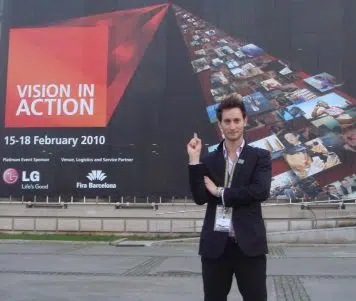
What is the Difference Between a Mentalist and a Magician?
This time, we will take you deep into the intricacies of the profession and the world of entertainment, to explain the differences between a mentalist and a magician “illusionist vs magician”, two entertainers who are often treated as one and the same when people are confused. A mentalist and a sensory artist, one of the most popular forms of entertainment in the world today – which is also thanks to mentalist Lior Suchard and his revolutionary performances – essentially provides a different and unique entertainment experience compared with magic. However, there are definitely some similarities between them as well.
Illusionist vs magician
In many ways, mentalism and sensory art are a branch of entertainment that sprouted from the world of magic shows, although today, this branch has definitely grown into a huge, impressive tree of its own that provides an even higher and more unique level of mystery and intrigue. This is, among other factors, due to the fact that a mentalist profession utilizes elements of “magic” but at a broader scope and a deeper level, and the audience is entirely part of the experience, as opposed to magic tricks that the magician performs. Now, let’s look at the difference between a mentalist and a magician.
Removing the mask from the art of magic artist
When it comes to the entertainment world, magicians have captivated and swept away audiences for hundreds and even thousands of years, with tricks involving dexterity of the hands, disappearing acts, and impressive illusions. Essentially, magicians are skilled entertainers who specialize in creating an illusion of the impossible. Here is a closer look at what a magician does:
- Magic artists are known for their paranormal mind reading magic being able to ostensibly perform physical manipulations of objects, such as causing them to appear, disappear, or change right before the audience’s eyes.
- The magician creates optical illusions that challenge the audience’s perception of reality, which is meant to leave the audience wondering and stunned, with the eternal question of “How did he do that?”
- An inseparable part of magic shows is the use of various stage tools and show tricks, such as cards, coins, or in the distant past – rabbits, as well as “invisible” tools for creating the illusion. This is all meant to increase the entertainment effect and the illusion of the magic trick.
Raising the level of the entertainment and magic with mentalism
Now, let’s look at the world of mentalism and sensory art, which has conquered show stages over the past few decades and, to a great extent, has diverted a lot of the focus away from classic magic shows. A mentalist takes the art of illusion to a different, higher level. Not only does he perform tricks and optical illusions, but he amazes his audience with a paranormal mind reading magic that seems supernatural and completely inexplainable. A mentalist utilizes fields such as neuroscience, psychology, guided imagery, human behavior and more to build an unbelievable, captivating entertainment experience.
Here are a few reasons and stage achievements that put mentalists a level above magicians:
- During a mentalism show, it is very common to see and experience the mind-reading capabilities of the entertainer leading the show, as he exposes and identifies precisely people’s personal, inner thoughts, reaching hidden information in a wondrous way and even exactly predicting what participants from the audience will do. Of course, this is not actually mind reading, but rather the skillful implementation of many techniques, to create an unforgettable entertainment experience.
- A mentalist or sensory artist dives deep into the world of capabilities that seem supernatural, which includes not only a paranormal mind-reading magic, but also predicting the future, telekinesis, telepathy, and more.
- An inseparable part of the quality, special nature of a mentalism performance is the fact that the audience is actively and deeply involved. Without the audience, the sensory art elements are insignificant and unsuccessful! In this way, the audience goes on a captivating, surprising, funny, and amazing journey with the entertainer, and becomes part of this breathtaking experience.
In the mentalist profession, things go much farther, deeper, and are more daring than simply using magic tricks and tools, by applying techniques from the worlds of brain science, psychology, language, economics, and behavior, in order to create entertainment that is breath-stopping, inconceivable, and enjoyable on an unparalleled level.
Bridging between the types of entertainment
While there are differences between magicians and mentalists, as aforementioned, these two areas are of course connected, inspiring each other and mutually beneficial to each other. There are similarities and common elements, and sensory artists and mentalists definitely draw inspiration, ideas, and elements from magic, and vice versa. In general, just as there is a connection between these areas of entertainment, there is also usually professional respect between magic artists and mentalists, alongside the healthy competition – all together, this improves the performances for audiences at both types of shows.
Want to experience mentalism at the highest possible level, with the leading, most familiar master mentalist in the world today? Get your tickets to an upcoming show or invite Lior Suchard to your next event. Contact us for additional information.








